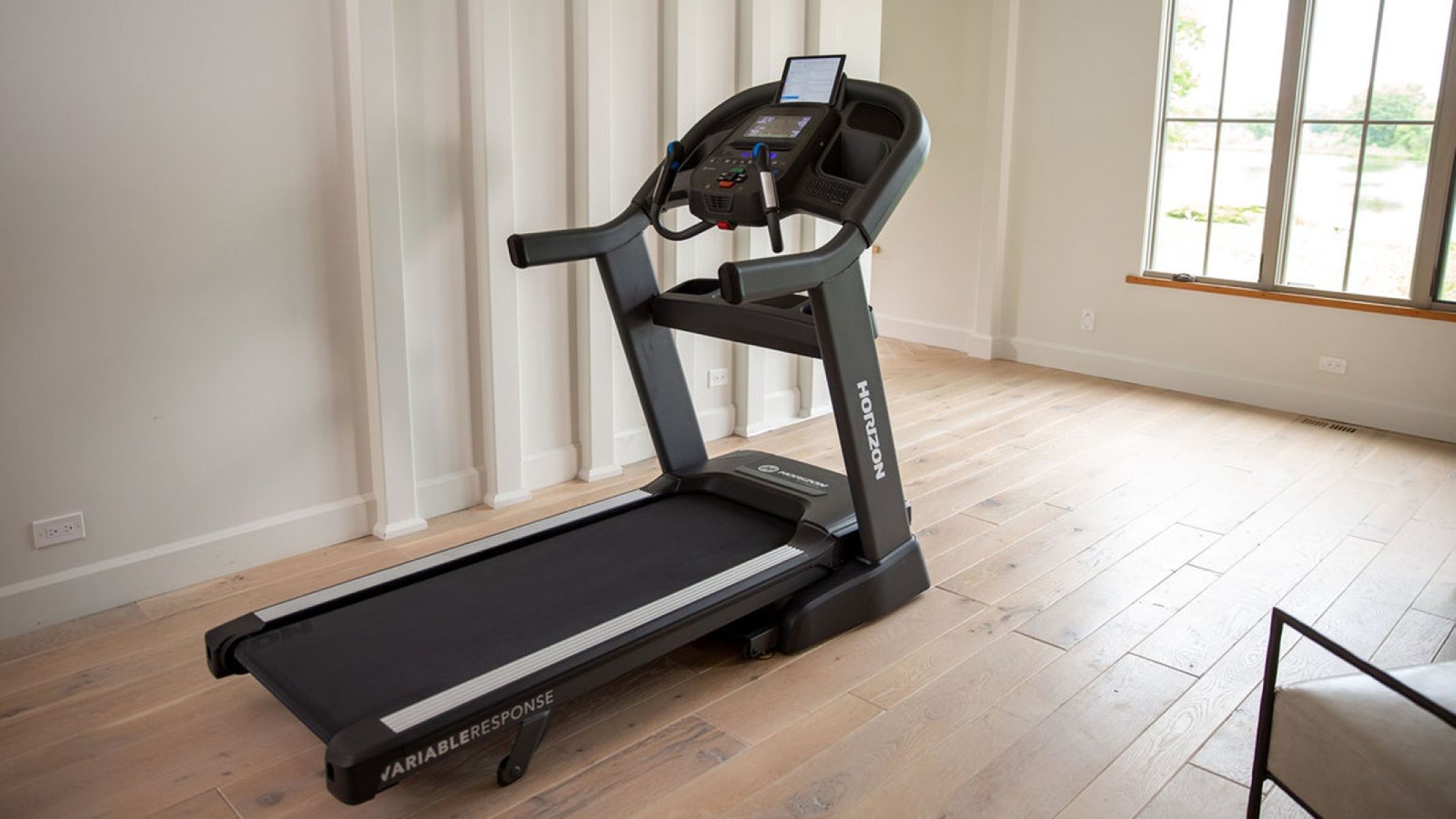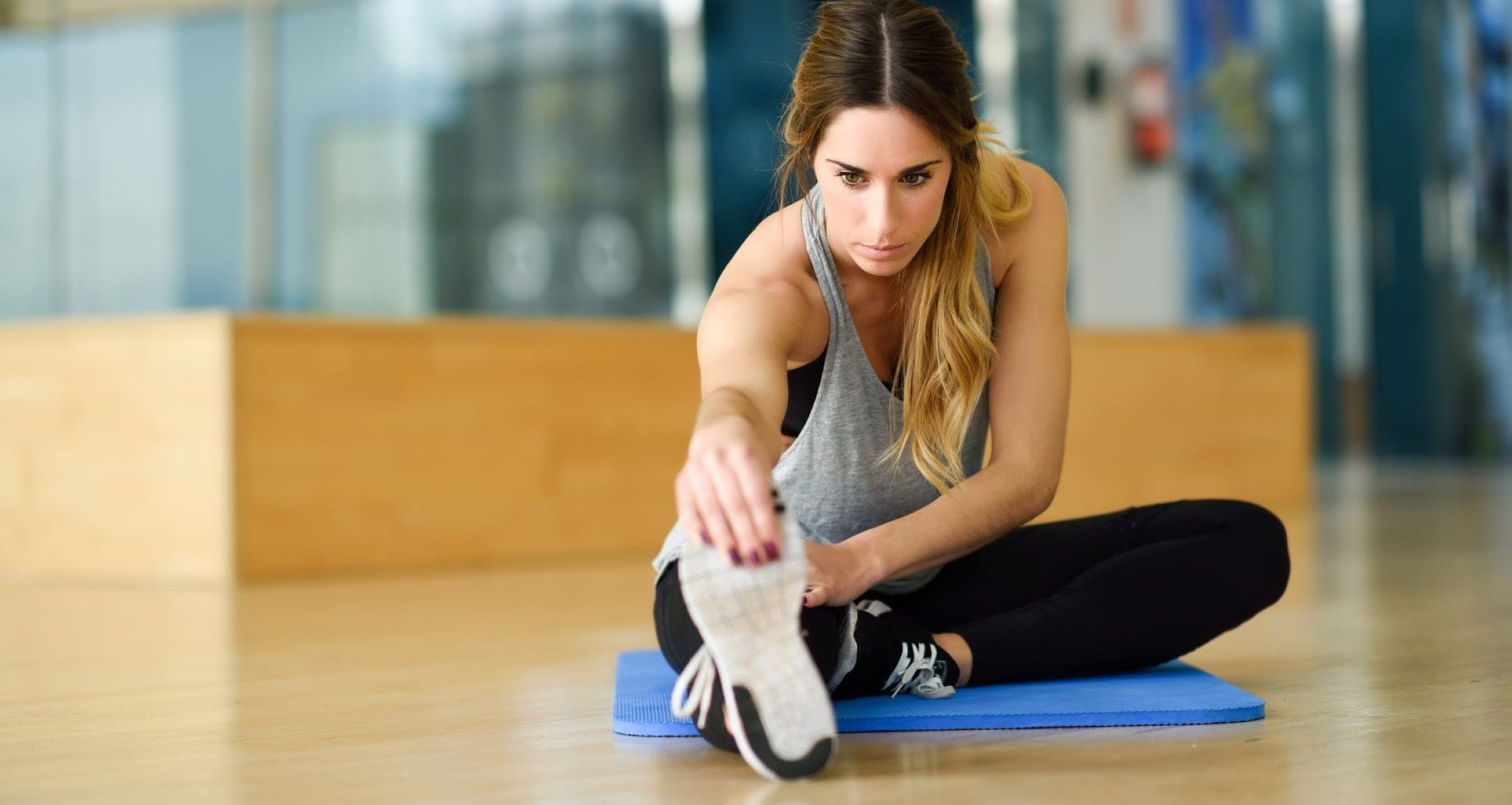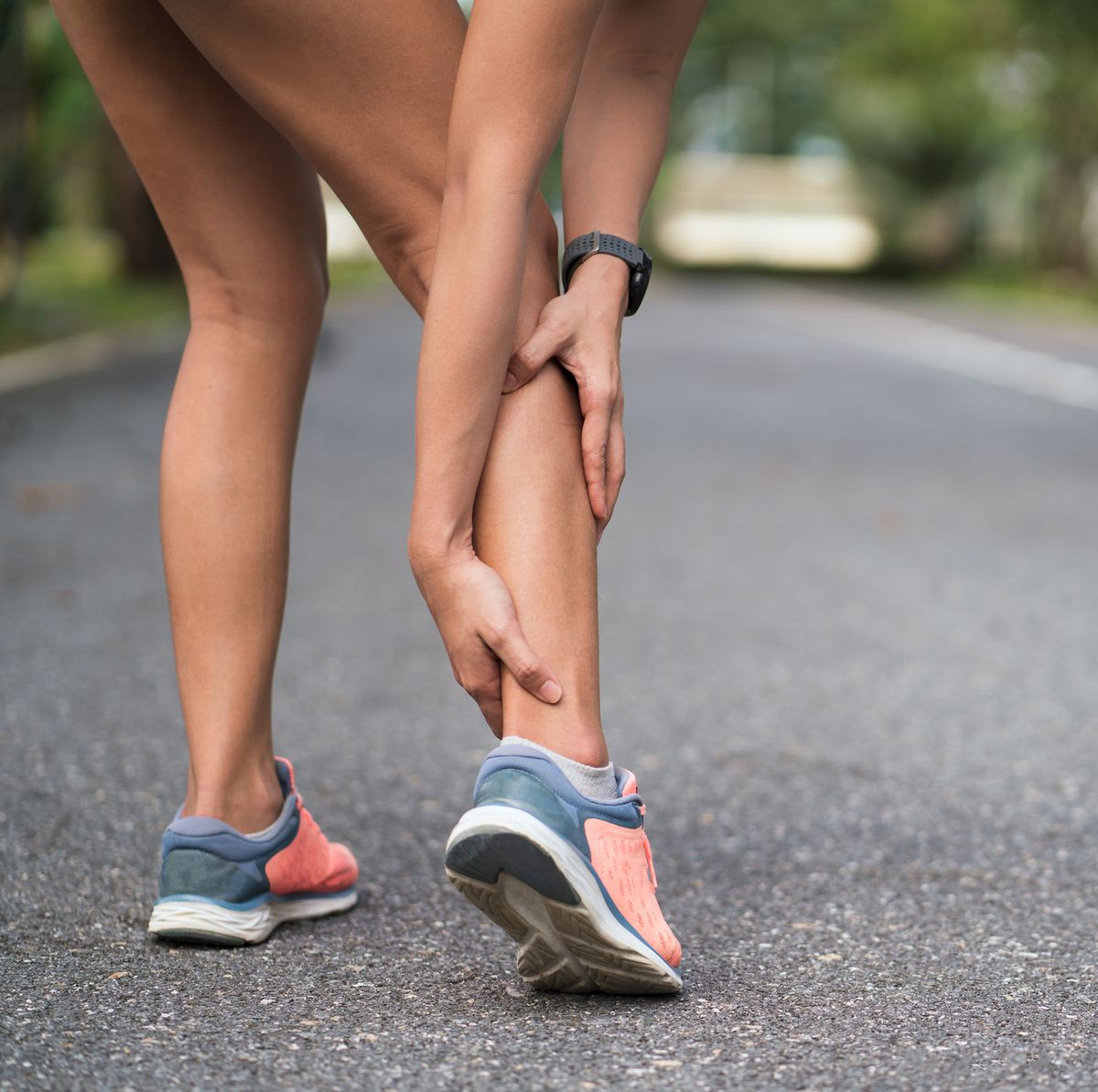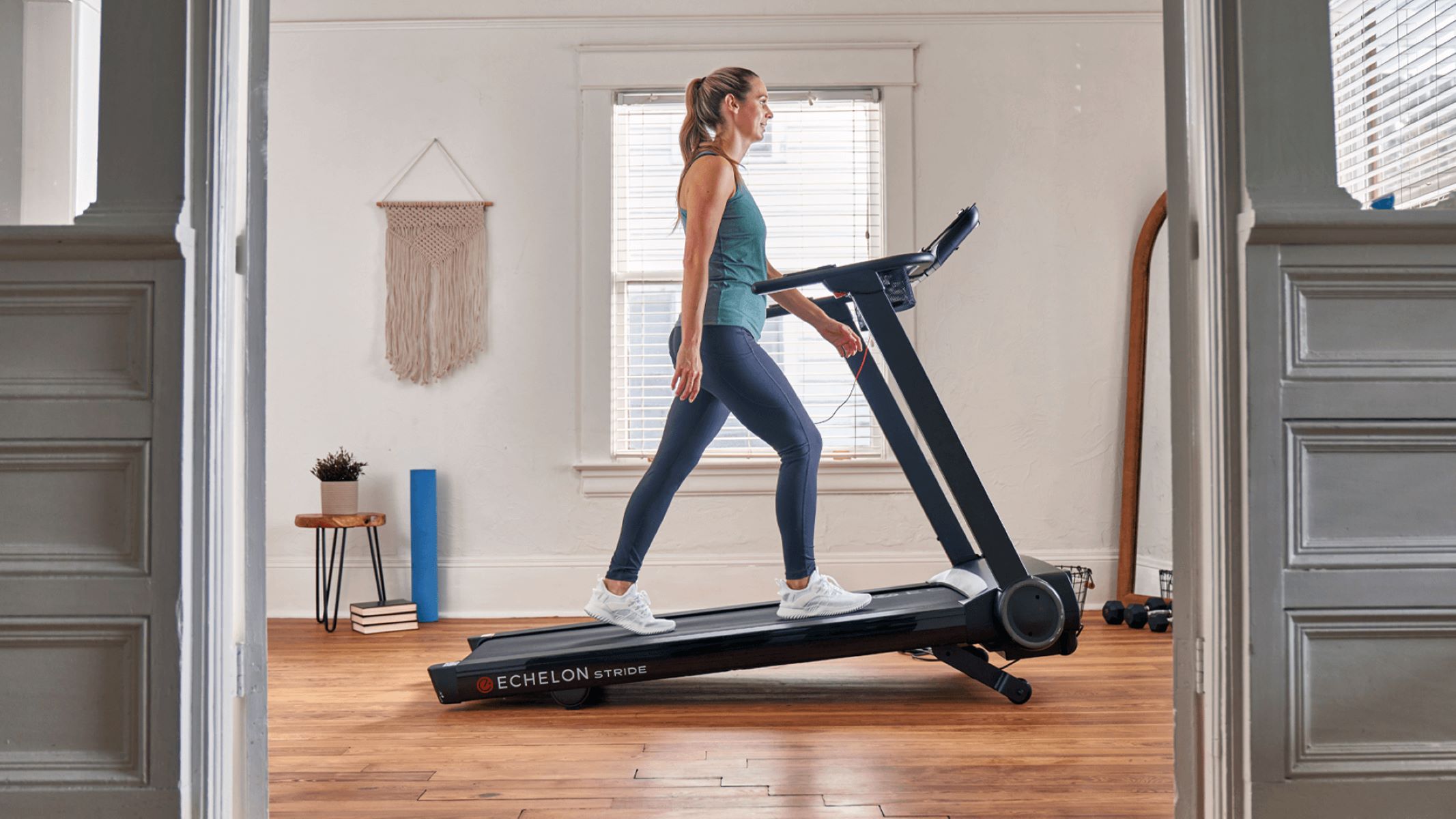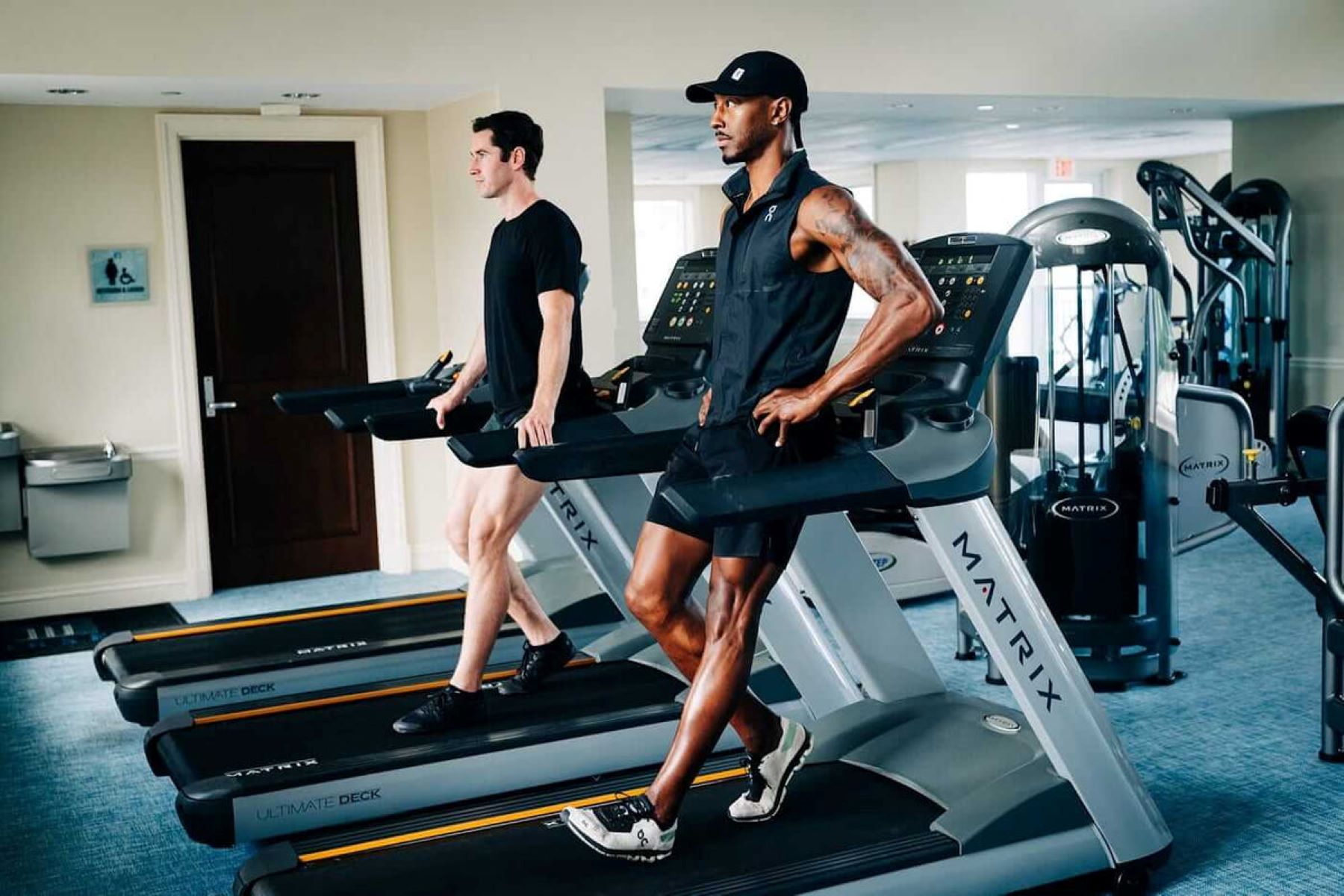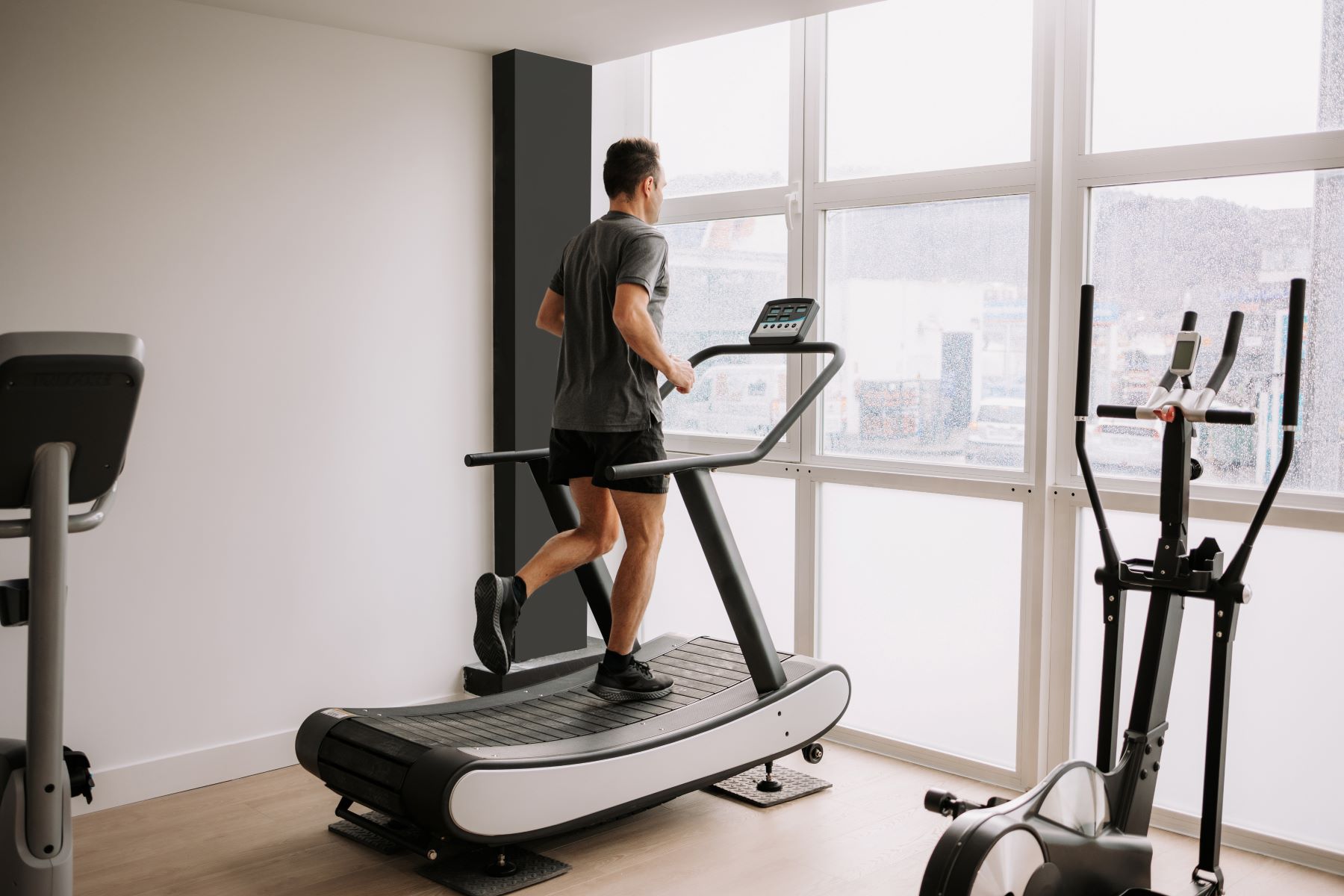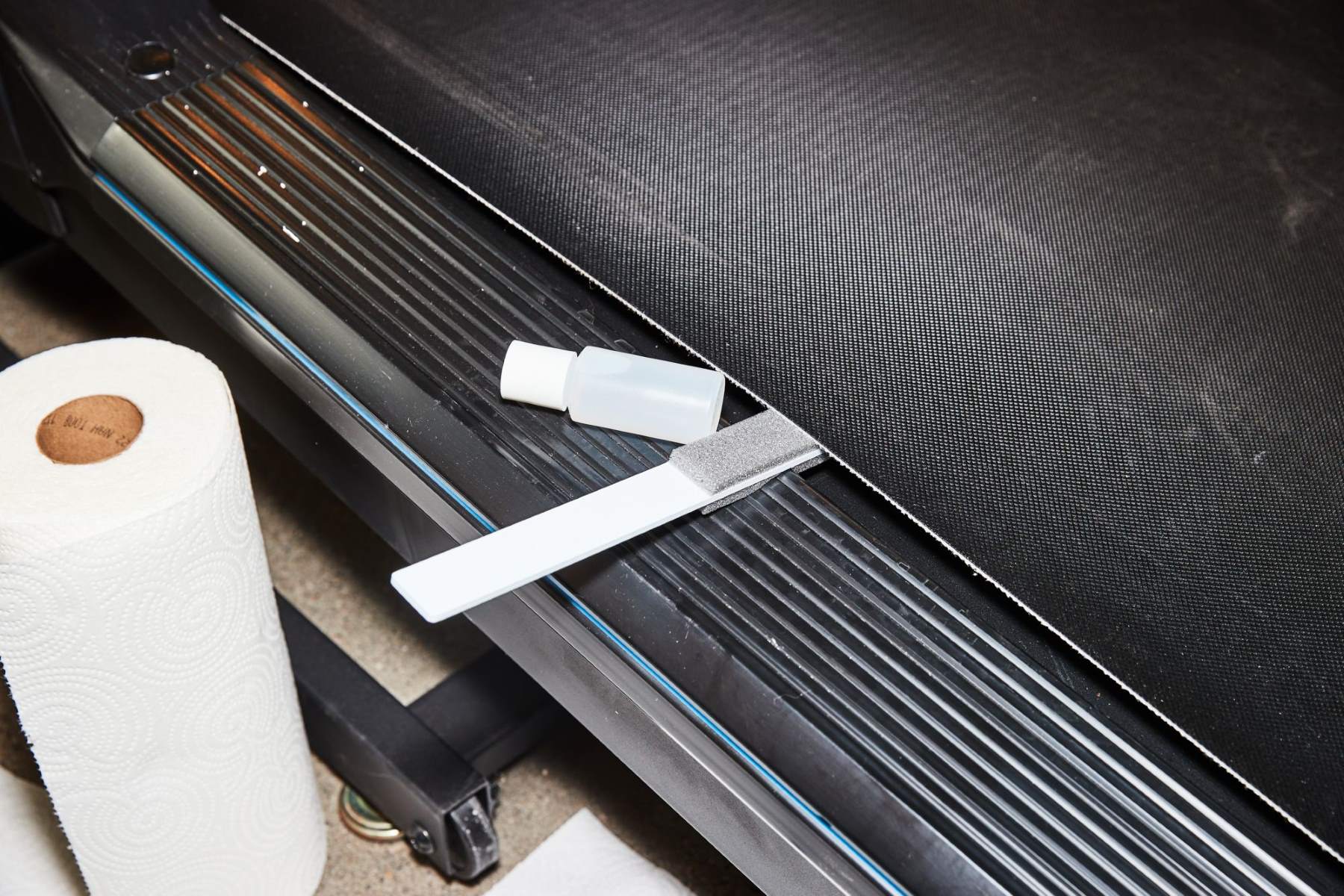Home>Misc>Featured>Why Does My Back Hurt When Walking On The Treadmill
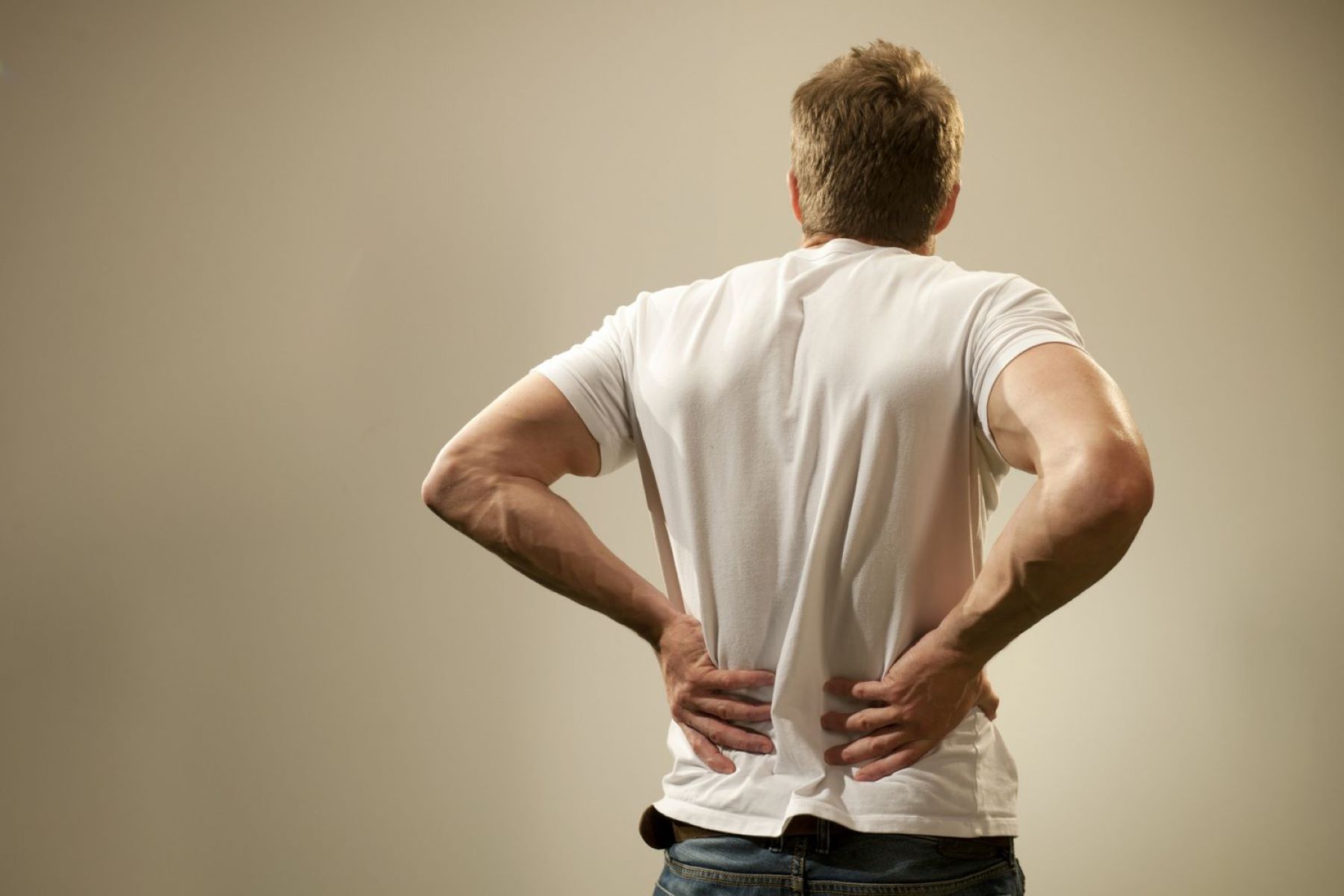

Featured
Why Does My Back Hurt When Walking On The Treadmill
Modified: October 25, 2023
"Featured: Find out why your back hurts when walking on the treadmill and how to alleviate the discomfort. Get expert tips and solutions to stay pain-free."
Introduction
Walking on a treadmill is a great way to stay active and maintain a healthy lifestyle. It allows you to exercise regardless of the weather conditions outside and offers a convenient and accessible option for those with busy schedules. However, for some individuals, walking on a treadmill may lead to discomfort or even pain in the back.
Experiencing back pain while walking on a treadmill can be frustrating and discouraging, but it is important to remember that there are potential solutions to address this issue. By identifying the common causes of back pain on a treadmill and implementing proper techniques and adjustments, you can alleviate and even prevent discomfort during your workout sessions.
In this article, we will explore the common causes of back pain on a treadmill and provide practical tips to help you maintain proper body mechanics and posture while walking. Additionally, we will discuss the importance of using suitable footwear and incorporating stretching and strengthening exercises into your routine to promote back pain relief.
It is essential to listen to your body and recognize when you may need to take a break or seek medical attention. By following these guidelines, you can continue to enjoy the benefits of walking on a treadmill without compromising your back health.
Common Causes of Back Pain on a Treadmill
Back pain while walking on a treadmill can be attributed to various factors. Understanding these common causes can help you identify the root of your discomfort and take appropriate measures to address it.
One of the most common causes of back pain on a treadmill is poor posture and body mechanics. When walking, it is crucial to maintain proper alignment, with your head, shoulders, and hips in a straight line. Slouching, leaning too far forward or backward, or twisting your torso can put unnecessary strain on your back, leading to discomfort.
Another potential cause of back pain is exercising with a weak core. The core muscles, including the abdominals and lower back muscles, play a significant role in supporting your spine and maintaining stability while walking. If these muscles are weak or imbalanced, it can contribute to poor posture and increased stress on the back.
Improper treadmill settings can also be a culprit behind back pain. Walking on a treadmill with an incline that is too steep or running at a high speed without adequate warm-up can strain the back muscles. It is essential to adjust the settings according to your fitness level and gradually increase intensity over time.
Wearing improper footwear can also contribute to back pain on a treadmill. Shoes that lack proper cushioning and support can result in an uneven distribution of weight and impact, causing discomfort in the back and other areas of the body. It is crucial to choose shoes specifically designed for walking or running on a treadmill.
Lastly, overtraining or pushing yourself too hard without allowing sufficient rest and recovery can lead to back pain. It is important to listen to your body’s signals and take rest days or alternate between high-intensity and low-intensity workouts to prevent overexertion.
By being aware of these common causes, you can now focus on implementing strategies to prevent or alleviate back pain while walking on a treadmill. Following proper body mechanics, adjusting treadmill settings, wearing appropriate footwear, and allowing ample rest and recovery can significantly reduce discomfort and improve your overall treadmill experience.
Proper Body Mechanics and Posture on the Treadmill
Maintaining proper body mechanics and posture while walking on a treadmill is crucial to prevent back pain and promote overall musculoskeletal health. By following these guidelines, you can minimize strain on your back and maximize the benefits of your treadmill workouts.
First and foremost, it is important to start with a neutral spine alignment. Stand tall with your head facing forward, shoulders relaxed, and your chin parallel to the floor. Avoid slouching or rounding your shoulders, as this can put unnecessary stress on your back.
When walking on the treadmill, focus on engaging your core muscles to stabilize your spine. Draw your belly button in towards your spine and maintain a slight contraction in your abdominal muscles throughout your workout. This will provide support for your back and help maintain proper alignment.
As you walk, keep your shoulders relaxed and your arms bent at a comfortable angle. Swing your arms naturally, allowing them to move in sync with your stride. Avoid tensing up your shoulders or swinging your arms excessively, as this can create tension in your upper back.
Another important aspect of proper body mechanics on the treadmill is to avoid leaning forward or backward. Keep your torso upright, aligned with your head and hips. Leaning too far forward can strain your lower back, while leaning too far back can lead to spinal compression and discomfort.
Additionally, make sure to take comfortable and natural strides. Avoid taking excessively long strides or overstriding, as this can increase stress on your back and joints. Maintain a natural and comfortable rhythm, allowing your feet to land softly and evenly on the treadmill.
Throughout your workout, it is also important to listen to your body. If you start to feel any discomfort or pain in your back, be mindful of your posture and make necessary adjustments. It may be helpful to periodically check your posture in a mirror or seek guidance from a fitness professional to ensure proper alignment.
By implementing these proper body mechanics and maintaining good posture on the treadmill, you can minimize the risk of back pain and injuries. Remember to keep practicing and consciously focus on your form until it becomes second nature. Your back will thank you for taking the necessary steps to protect and care for it during your treadmill workouts.
Adjusting the Treadmill Settings for Back Pain Relief
When experiencing back pain while walking on a treadmill, making appropriate adjustments to the treadmill settings can help alleviate discomfort and promote back pain relief. By following these recommendations, you can create a more comfortable and supportive environment for your back during your workouts.
Firstly, consider adjusting the speed and incline settings to a level that suits your fitness level and comfort. If you are just starting or experiencing back pain, it may be beneficial to reduce the speed and incline to a more manageable level. Gradually increase the intensity over time as you feel more confident and your back becomes stronger.
Next, pay attention to your stride length. Taking shorter, more controlled steps can help reduce the impact on your back and minimize strain. Avoid long strides or overstriding, as this can place additional stress on your back and joints. Focus on maintaining a natural and comfortable stride length throughout your workout.
Another important adjustment is the cushioning system of the treadmill. Some treadmills offer adjustable cushioning, which can provide additional support and shock absorption, reducing the impact on your back. Experiment with different cushioning settings to find the level that feels most comfortable and supportive for your back.
Furthermore, consider using the handrails of the treadmill sparingly. While they can provide stability and support, relying too heavily on the handrails can negatively impact your posture and put strain on your back. Instead, try to maintain a balanced and upright posture, utilizing your core muscles for stability.
Additionally, take breaks and incorporate intervals into your treadmill workouts. Standing or sitting for prolonged periods can contribute to back pain. Therefore, it is important to take short breaks to stretch and rest. You can also alternate between periods of higher intensity and lower intensity to give your back muscles a chance to recover and reduce the risk of overexertion.
Lastly, consider using a heart rate monitor during your treadmill workouts. It can help ensure that you are exercising within your target heart rate zone, without pushing your body too hard. This can be especially important for individuals with back pain, as excessive exertion can worsen discomfort and impede recovery.
By making these adjustments to the treadmill settings, you can create a more supportive and comfortable environment for your back. Remember to listen to your body and make modifications as needed. Each person’s needs and tolerances may vary, so it may require some trial and error to find the optimal settings for your back pain relief on the treadmill.
Stretching and Strengthening Exercises for Back Pain Relief
Incorporating stretching and strengthening exercises into your routine can be incredibly beneficial for alleviating and preventing back pain while walking on a treadmill. By targeting the muscles that support your back, you can improve flexibility, stability, and overall back health. Here are some exercises to consider:
1. Hamstring Stretch: Stand with one foot on the treadmill and extend the other leg forward, resting your heel on the treadmill console. Lean forward from the hip, keeping your back straight, until you feel a gentle stretch in the back of your thigh. Hold for 30 seconds, then switch legs.
2. Quadriceps Stretch: Stand sideways on the treadmill, holding onto the handrails for support. Bend one leg and bring your heel towards your glutes, grasping your foot or ankle with your hand. Hold the stretch for 30 seconds, then switch legs.
3. Core Exercises: Strengthening your core muscles can provide stability and support for your back. Plank exercises, bridges, and bicycle crunches are effective in targeting the abdominal and lower back muscles. Aim for 2-3 sets of 10-15 repetitions.
4. Back Extension Exercises: Lie with your stomach on the treadmill, placing your hands on the sides of the console. Slowly lift your chest off the treadmill, engaging your back muscles. Hold for a few seconds, then lower back down. Repeat for 10-15 repetitions.
5. Pelvic Tilts: Lie on your back with your knees bent and feet flat on the treadmill. Slowly tilt your pelvis forward, pressing your lower back into the treadmill. Hold for a few seconds, then release. Repeat 10-15 times.
6. Seated Spinal Rotations: Sit on the edge of the treadmill seat or a stable chair. Place your hands on your hips and rotate your torso to the right, then to the left, keeping your back straight. Repeat 10-15 times on each side.
In addition to these exercises, it is important to warm up before and cool down after your treadmill workouts. Gentle stretching and light cardiovascular exercises, such as walking or cycling, can help prepare your muscles and reduce the risk of strain or injury.
Remember to listen to your body and start with exercises that are appropriate for your fitness level. If you experience any pain or discomfort, modify the exercises or consult with a healthcare professional or a certified fitness instructor for guidance.
By incorporating these stretching and strengthening exercises into your routine, you can improve the flexibility and strength of the muscles supporting your back, reducing the likelihood of back pain while walking on a treadmill.
Importance of Using Proper Footwear on a Treadmill
Choosing the right footwear is essential when walking on a treadmill, as it significantly impacts your comfort, stability, and overall safety. Wearing proper shoes can provide necessary support, cushioning, and protection for your feet and back. Here’s why using suitable footwear is crucial:
1. Shock Absorption: Walking or running on a treadmill can create impact and stress on your feet and joints. Proper footwear with adequate cushioning helps absorb shock and reduce the impact on your back and lower body. This helps prevent discomfort and minimizes the risk of injuries.
2. Arch Support and Stability: The arch of your foot acts as a natural shock absorber. Shoes with proper arch support provide stability and help distribute your body weight evenly. This reduces the strain on your feet, ankles, knees, and back, promoting proper alignment and reducing the risk of pain and injury.
3. Proper Alignment: Using shoes specifically designed for walking or running on a treadmill helps maintain proper foot and body alignment. This includes support for your ankles and proper positioning of your bones, tendons, and ligaments. It ensures that pressure is evenly distributed, reducing the strain on your back and minimizing the risk of imbalances or overpronation.
4. Comfort: Wearing comfortable shoes on a treadmill can greatly enhance your workout experience. Shoes that fit well, have a roomy toe box, and provide cushioning allow for a more enjoyable and pain-free workout. Avoid shoes that are too tight or too loose, as they can cause discomfort and increase the likelihood of blisters or other foot problems.
5. Injury Prevention: Using improper footwear on a treadmill can lead to various injuries, not just in your feet but also in your back and other parts of your body. Ill-fitting shoes, lack of cushioning, or inadequate arch support can contribute to stress fractures, plantar fasciitis, shin splints, and other issues that can affect your overall well-being.
When shopping for treadmill shoes, consider factors such as the type of shoe (running or walking), cushioning level, arch support, and proper fit. It is recommended to visit a specialty shoe store, where trained professionals can assess your foot type, stride, and specific needs to help you find the ideal footwear.
Remember to replace your treadmill shoes regularly, as worn-out shoes can lose their cushioning and support. Aim to replace them every 300-500 miles, or sooner if you notice signs of wear and tear.
Investing in a quality pair of shoes designed for treadmill workouts is vital for your comfort, safety, and overall well-being. Taking care of your feet with proper footwear will not only enhance your treadmill experience, but also contribute to maintaining a healthy and pain-free back.
Listening to Your Body and Taking Breaks
When it comes to walking on a treadmill, it is crucial to listen to your body and recognize any signs of discomfort or pain. Pushing through the discomfort can exacerbate back pain and potentially lead to serious injuries. Here’s why it’s important to listen to your body and take breaks:
1. Pain Awareness: Pay attention to any sensations or pain in your back while walking on a treadmill. It could be a sign of improper form, overexertion, or an underlying condition. Ignoring the pain can worsen the issue and hinder your progress. Take it as a signal to adjust your technique or take a break.
2. Breaks for Recovery: Taking breaks during your treadmill workout allows your muscles, including those in your back, to recover and recharge. Continuous or prolonged walking without breaks can lead to muscle fatigue, which can increase the risk of back strain and injury. Incorporate short rest periods to stretch and hydrate, giving your body time to recover.
3. Monitoring Intensity: It’s important to maintain a pace and intensity level that is appropriate for your fitness level and current physical condition. Pushing yourself too hard can overload your back and result in injury. By listening to your body, you can adjust the speed, incline, or duration of your treadmill workouts to a level that is comfortable and safe for you.
4. Proper Warm-up and Cool-down: Before hopping on the treadmill, always invest time in a proper warm-up routine. This may include light stretches, dynamic movements, or even a short walk to gradually increase your heart rate and prepare your muscles for exercise. Similarly, don’t neglect the importance of cooling down after your workout to gradually decrease your heart rate and prevent muscle stiffness.
5. Rest Days: Recognize the significance of rest days in your exercise regimen. Allow your body, including your back, to recover and repair itself. Rest days help prevent overuse injuries and provide an opportunity for your muscles to strengthen and adapt to the demands of exercise.
Remember, every individual is unique, and what works for one person may not work for another. It is essential to trust your instincts and be mindful of any physical discomfort or limitations. If necessary, consult with a healthcare professional or a certified trainer for guidance on optimizing your treadmill workouts and addressing any concerns.
By actively listening to your body and taking breaks when needed, you can prevent injuries, avoid exacerbating back pain, and ensure a more sustainable and enjoyable treadmill experience.
When to Seek Medical Attention for Treadmill-Related Back Pain
In most cases, back pain experienced while walking on a treadmill can be managed and alleviated with proper techniques, adjustments, and self-care. However, there are certain situations where it is important to seek medical attention for your treadmill-related back pain. Here are some signs that indicate a need for further evaluation:
1. Severe or Increasing Pain: If your back pain is severe or getting worse despite implementing proper techniques and adjustments, it is advisable to consult with a medical professional. Severe pain can indicate a more serious underlying condition that requires medical evaluation and treatment.
2. Pain Radiating to Other Areas: If your back pain radiates down your leg, especially if accompanied by numbness, tingling, or weakness, it could be a sign of a pinched nerve or sciatica. These conditions may require medical intervention to manage symptoms and correct the underlying cause.
3. Loss of Bladder or Bowel Control: If you experience a sudden loss of bladder or bowel control along with back pain, it could be a sign of a medical emergency called cauda equina syndrome. This condition requires immediate medical attention to prevent permanent damage to the nerves.
4. History of Spinal Conditions: If you have a history of spinal conditions, such as herniated discs, spinal stenosis, or scoliosis, and experience back pain while walking on a treadmill, it is important to consult with a healthcare professional. They can provide appropriate guidance and treatments based on your specific condition.
5. Persistent Pain or Limited Function: If your back pain persists for an extended period or significantly affects your ability to perform daily activities, it is recommended to seek medical attention. A healthcare professional can assess your condition, provide a proper diagnosis, and recommend appropriate treatment options.
6. Exacerbation of Existing Conditions: If you have a pre-existing back condition, such as osteoarthritis or degenerative disc disease, and notice a worsening of symptoms or an increase in back pain during treadmill workouts, it is important to consult with a medical professional. They can assess the situation and provide guidance on managing your condition effectively while exercising.
Remember, it is always better to err on the side of caution and consult with a healthcare professional if you have any concerns about your treadmill-related back pain. They can provide a proper diagnosis, recommend appropriate treatments or therapies, and help you get back to your exercise routine safely.
While self-care and adjustments may alleviate most cases of treadmill-related back pain, seeking medical attention when necessary ensures that any underlying conditions or serious causes are identified and addressed promptly for optimal recovery and pain relief.
Conclusion
Back pain while walking on a treadmill can be a common complaint, but it doesn’t have to prevent you from enjoying the benefits of this exercise. By understanding the common causes, implementing proper body mechanics and posture, adjusting the treadmill settings, incorporating stretching and strengthening exercises, wearing suitable footwear, and listening to your body, you can alleviate and prevent back pain during your treadmill workouts.
Remember to maintain proper alignment, engage your core muscles, and avoid leaning or overstriding. Adjust the treadmill settings to match your fitness level, use proper footwear for support and shock absorption, and take breaks to allow for recovery. Additionally, include stretching and strengthening exercises focused on the core and back muscles to prevent imbalances and improve stability.
While most cases of treadmill-related back pain can be managed with self-care and adjustments, it is important to seek medical attention if the pain is severe, persistent, or associated with symptoms such as radiating pain or loss of bladder or bowel control. A healthcare professional can provide a proper diagnosis, recommend treatments, and help address any underlying conditions or concerns.
By taking these proactive steps, you can continue to enjoy the many benefits of walking on a treadmill without compromising your back health. Remember to listen to your body, make adjustments as needed, and prioritize both safety and comfort during your treadmill workouts. Stay consistent, stay mindful, and stay active for a healthy and pain-free fitness journey!

